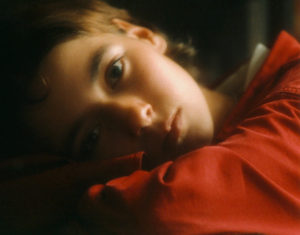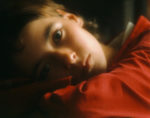
In 1893, Stenbock published at The Leadenhell Press in London his third collection of verses, The Shadow of Death, subtitled A Collection of Poems, Songs, and Sonnets. The 1984 reprinting by Garland Publishing, New York, is available in digital form on Internet Archive.
In concordance with its title, the main topic of this collection is death. The author hints that his life will soon end, that he will not know spring. Indeed, Stenbock would die two years later, in 1895. A few poems are devoted to love, and here at last he does not hide the gender of the beloved, it is a “he.”
I present today a strange poem from this collection. Who was that person, pale and speechless, who appeared in front of him? Was it a dream? Or a vision induced by alcohol or opium? Or a foreboding of death?
MAY BLOSSOM. (A Vision)
by Stanislaus Eric Stenbock
I SPRINKLED on my bed to-day,
Upon my bed of ceaseless pain,
Some of the perfume of red may—
—I shall not see the spring again.
It seemed, some halo of the moon,
Which lambent, carmine shadows threw;
The disc was wholly silver soon
Encircled with a ring of blue.
And in that silvern heart of space,
Slowly an image did arise,
Thy strange dark hair, thy strange pale face,
And thine unfathomable eyes.
But oh! thy face was very pale,
Thine eyes were wilder than of old—
Thou triedst to speak, but speech did fail,
And darling! how thy lips were cold.
It seemed there fell a red white snow
Upon my bed of ceaseless pain,
From where the far off hawthorns grow,
I shall not see the spring again.
Stenbock wrote a short play, La Mazurka des Revenants, which remained unpublished until David Tibet edited it and published it at Durtro in 2002. In it, a prince asks his servant to set his house on fire, killing thus himself and three women. They become ghosts, and each year on the anniversary of their death, the house and its inhabitant exist again, trapping visitors to a deadly dance. One of the last declarations of the prince before death is the following, where the last sentence repeats the one in the above poem:
Oh, we live at the end of the world. How can we ever be glad, seeing that we have nought but the dead leaves of Autumn wherewith to weave ourselves garlands, and adorn our houses. The blossoms of Spring are long past, faded and fallen. We shall not see the Spring again!
This paragraph sums up the tone of this collection of verses, and more generally of Stenbock’s last works. It corresponds also to the feelings of the “Decadent” writers of the end of the 19th century, anticipating an approaching catastrophe, the “tomorrow one dies” of Ernest Dowson.

